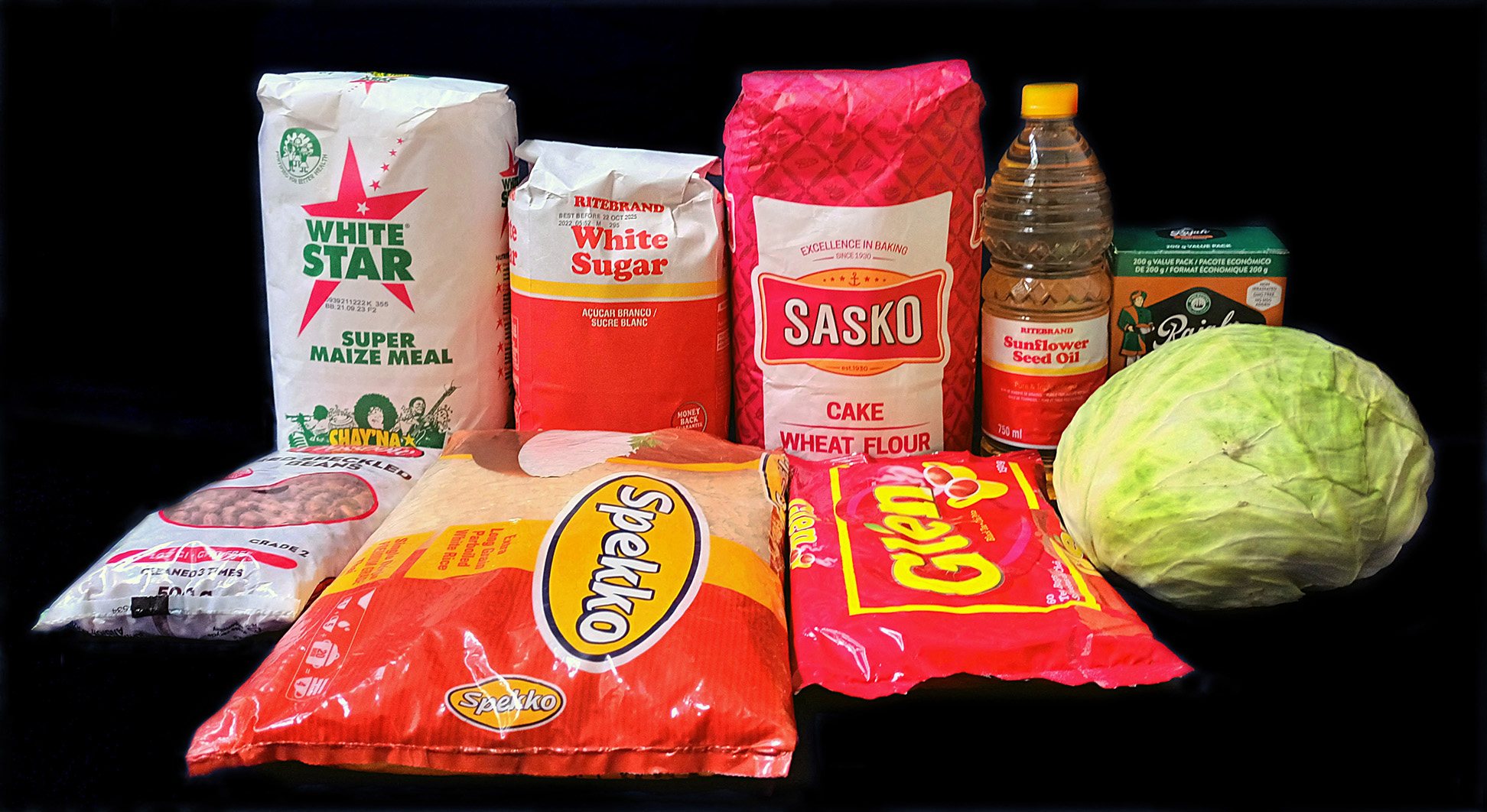Maverick Citizen has been tracking the prices of 14 basic food items that a consumer can buy with R370, the amount of the Social Relief of Distress (SRD) grant. The food basket hovers above R400, making it unaffordable for those who receive the grant as their only source of income.
Food inflation pressure is expected to rise modestly in the coming months, driven by concerns associated with the policy direction of the new US government and potential impacts on the exchange rate, according to a Food Inflation Brief released in May. The Bureau for Food and Agricultural Policy Brief provides an overview of food inflation dynamics, its associated causes, and the cost of basic healthy eating based on March 2025 food prices.
The latest Stats SA Consumer Price Index shows that the annual rate for food and non-alcoholic beverages dropped to 2,7% in March from 2,8% in February. Vegetables, fruits and nuts, cereal products, meat and fish registered higher annual rates. Lower rates were recorded for oils and fats; hot beverages; milk, other dairy products and eggs; cold beverages; and sugar, confectionery and desserts.
In the Household Affordability Basket the average cost of the foods prioritised and bought first increased by R0,05 (0,0%) from R2,923.52 in March 2025 to R2,923.58 in April 2025.
Year-on-year: The average cost of the foods prioritised and bought first in the household food basket increased by R53,28 (1,9%) from R2,870.29 in April 2024 to R2,923.58 in April 2025.
Global uncertainty
The Bureau for Food and Agricultural Policy Brief stated that prices may edge higher because emerging market currencies such as the rand tend to come under pressure when global uncertainty increases.
“In South Africa this was further exacerbated by the uncertainty related to the stability of the Government of National Unity amid Budget negotiations. With the National Treasury’s decision to rescind the proposed increase in Value Added Tax (VAT), consumers are no longer faced with the possibility of additional pressure for items outside the zero-rated basket,” the brief reads.
“Moreover, the anticipated rebound of the new summer crop harvest will provide relief to livestock producers through lower feed costs and ease the cost of core staples for consumers. On the meat and dairy side, animal disease outbreaks remain a critical factor to monitor, given their potential impact on supply and prices,” the report reads.

A current prominent disease outbreak is food-and-mouth disease that has resulted in China halting the trade of beef and meats from cloven-hoofed animals. The impact may see prices fluctuate as the agricultural community tackles this flare-up.
The R10 jump in maize meal reflects the ongoing price volatility in maize due to drought-affected harvests.
“South Africa’s maize prices have exhibited significant volatility in recent months, following a drawdown on stocks after the drought-affected 2024 harvest of only 12.8 million tons. Given that maize is South Africa’s staple crop that plays a crucial role in food security for low-income households, it is essential to provide additional context on recent market dynamics,” the brief explains.
Forecast
On 30 April 2025, the South Africa Crop Estimates Committee released its third summer crop production forecast, projecting a maize harvest of 14.7 million tons — a 14% increase compared to the drier 2024 production season. According to the latest report from the National Agricultural Marketing Council’s Supply and Demand Estimates Committee, total domestic demand for white and yellow maize is estimated to be just under 12 million tons.
The Food Inflation Brief says this indicates that South Africa will sufficiently meet its local maize consumption requirements, “both as a staple food crop and a key ingredient in animal feed. Additionally, South Africa is expected to fulfill its commitments to traditional regional export markets, including Mozambique, Swaziland, Namibia, and others.”
Significant concern was raised in the media recently as maize prices exceeded R6,000 per ton.
The report states that his peak happened only on 22 April, when the prices of white and yellow maize surged by more than R800 per ton within a single day.
“This sharp increase was driven by the closure of technical trading positions on the final trading day for the futures contract, rather than any fundamental changes in supply and demand conditions. Consequently, there is no expectation of abrupt maize meal price hikes that could negatively impact food security in the near future.” DM





